
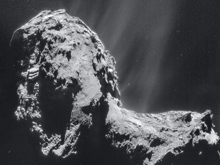 1. Comet rendezvous
1. Comet rendezvous
In November, Rosetta's lander, named Philae, captured headlines around the world by touching down for the first time on the surface of a comet. Now, the instrument-studded mother ship is keeping pace with the comet as it continues in its orbit, snapping pictures and analyzing the jets of gas that will spew from 67P as the comet nears its closest approach to the sun in August 2015.
 2. Cooperative ‘bots’ don't need a boss
2. Cooperative ‘bots’ don't need a boss
Robots are getting better all the time at working with humans, but this year several teams demonstrated that these machines can also work together, without human supervision.
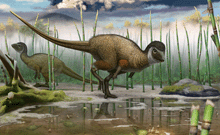 3. The birth of birds
3. The birth of birds
It took a lot to turn lumbering cousins of Tyrannosaurus rexinto agile hummingbirds and graceful swans. This year, evolutionary biologists figured out the mode and tempo of the spectacular evolutionary transition from dinosaurs to birds.
 4. Youth serum for real?
4. Youth serum for real?
This year, in work with profound implications for aging, researchers showed that blood or blood components from a young mouse can rejuvenate an old mouse's muscles and brain. If the results hold up in people—an idea already in testing—factors in young blood could offer the antidote to aging that humanity has sought as far back as Juan Ponce de León's quest for the Fountain of Youth.
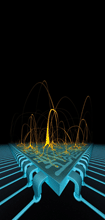 5. Chips that mimic the brain
5. Chips that mimic the brain
John von Neumann may have finally met his match. Nearly 70 years ago, the Hungarian-born polymath sketched out the basic design of modern computers, with separate processing, memory, and control units. But this year, computer engineers at IBM and other companies rolled out a promising alternative: the first large-scale “neuromorphic” chips, designed to process information in ways more akin to living brains.
 6. Cells that might cure diabetes
6. Cells that might cure diabetes
Since the discovery of human embryonic stem (ES) cells, researchers have hoped to wield them against disease. The quest has been frustratingly slow. For more than a decade, for example, labs all over the world have sought to turn ES cells into cells of the pancreas called β cells. β cells respond to rising blood sugar by making insulin, a hormone that allows cells to take up and use glucose. An autoimmune attack that kills β cells leads to type 1 diabetes; replacing them with lab-grown cells might provide a cure.
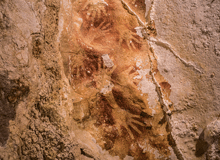 7. Europe's cave art has a rival
7. Europe's cave art has a rival
For decades, visitors have marveled at the prehistoric graffiti that fills the Maros caves on the island of Sulawesi, Indonesia: hand stencils outlined in mouth-blown red paint, mixed with pictures of rare “pig-deer” in red and mulberry hues. This year they evoked an extra measure of wonder. Scientists discovered that the images, thought to be about 10,000 years old, are actually four times older—at least as ancient as the famous cave art in Europe.
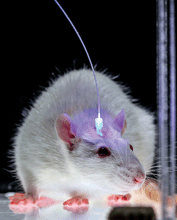 8. Manipulating memory
8. Manipulating memory
Memory is notoriously malleable. Our recollections fade and take on new meanings; sometimes we remember things that never even happened. But just what is happening in our brain as memories are remodeled remains mysterious.
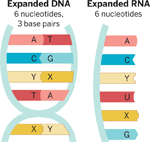 9. Giving life a bigger genetic alphabet
9. Giving life a bigger genetic alphabet
Everywhere on Earth, the genetic code at the heart of living things consists of the same four genetic letters. Everywhere, that is, except in a flask of Escherichia coli bacteria on a lab bench in southern California. There, researchers this year engineered the bacteria to incorporate two additional letters into their genetic alphabet. In addition to the natural nucleotides, in which G pairs with C and A pairs with T, the bacterial DNA includes a novel pair: X and Y.
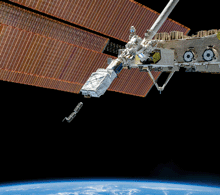 10. The rise of the CubeSat
10. The rise of the CubeSat
A decade ago, CubeSats were just educational tools, a way for university students to place a simple Sputnik in space. Now these 10-centimeter boxes, built with off-the-shelf technology and costing hundreds of thousands of dollars rather than hundreds of millions, have taken off. More than 75 were launched this year, a record. What's more, the little boxes are starting to do real science.